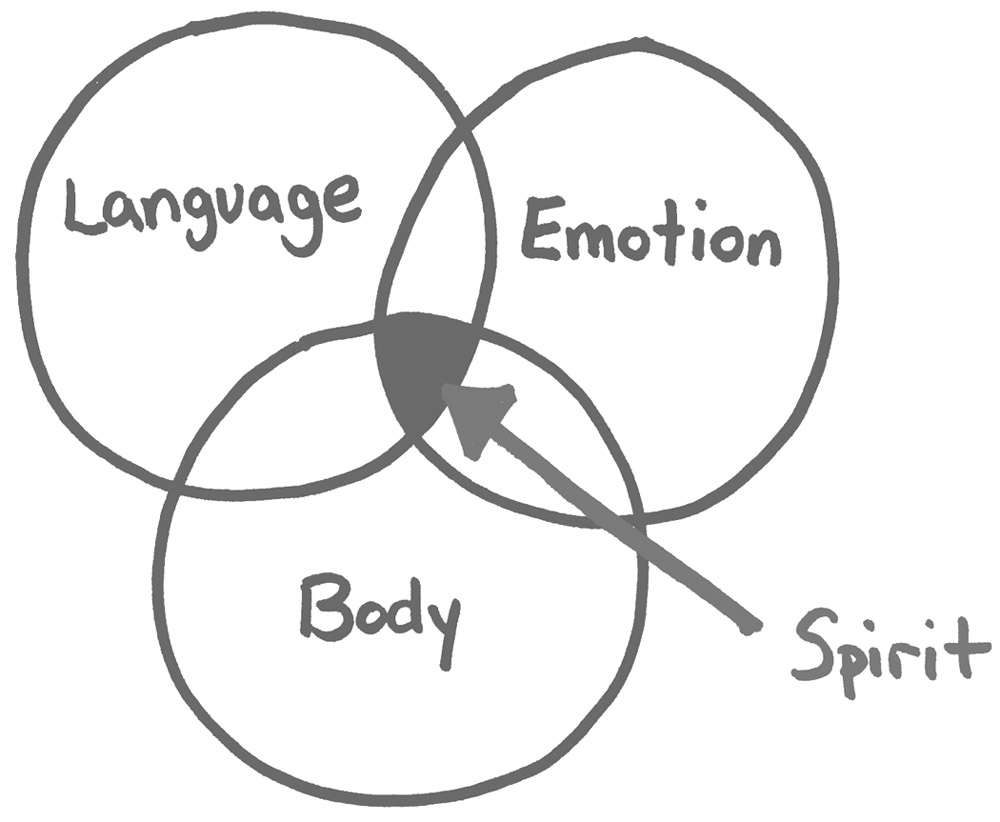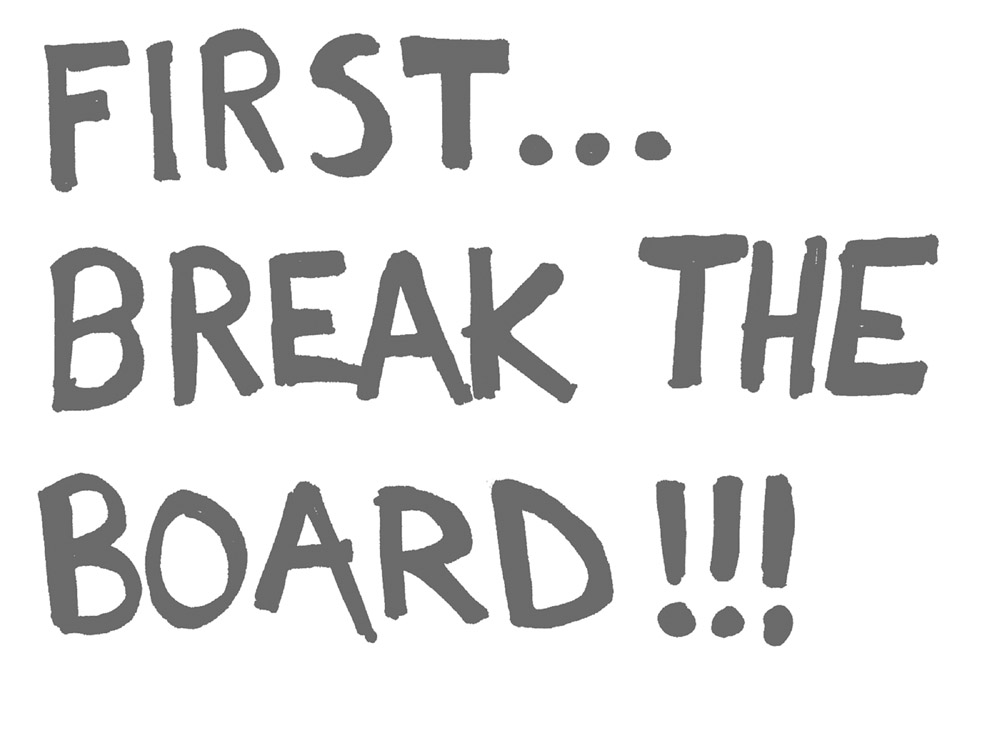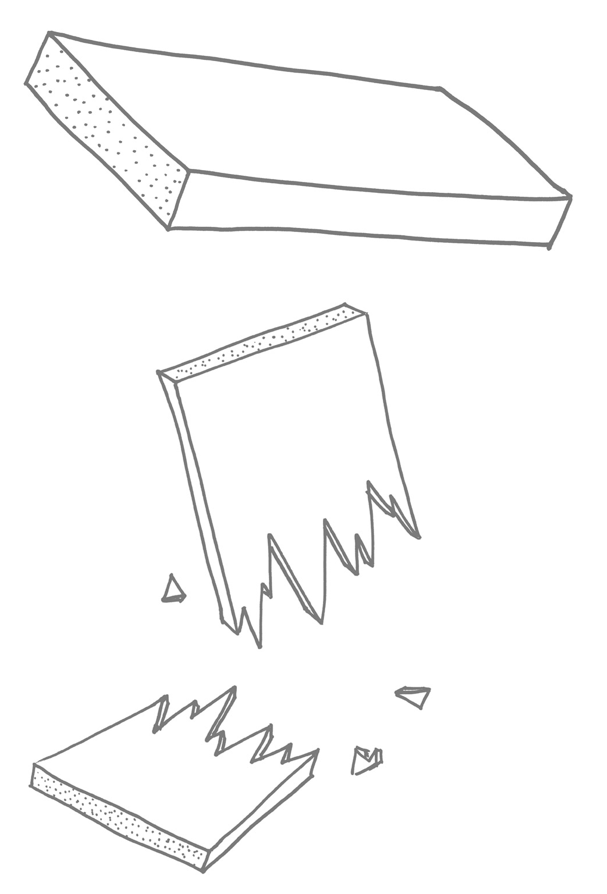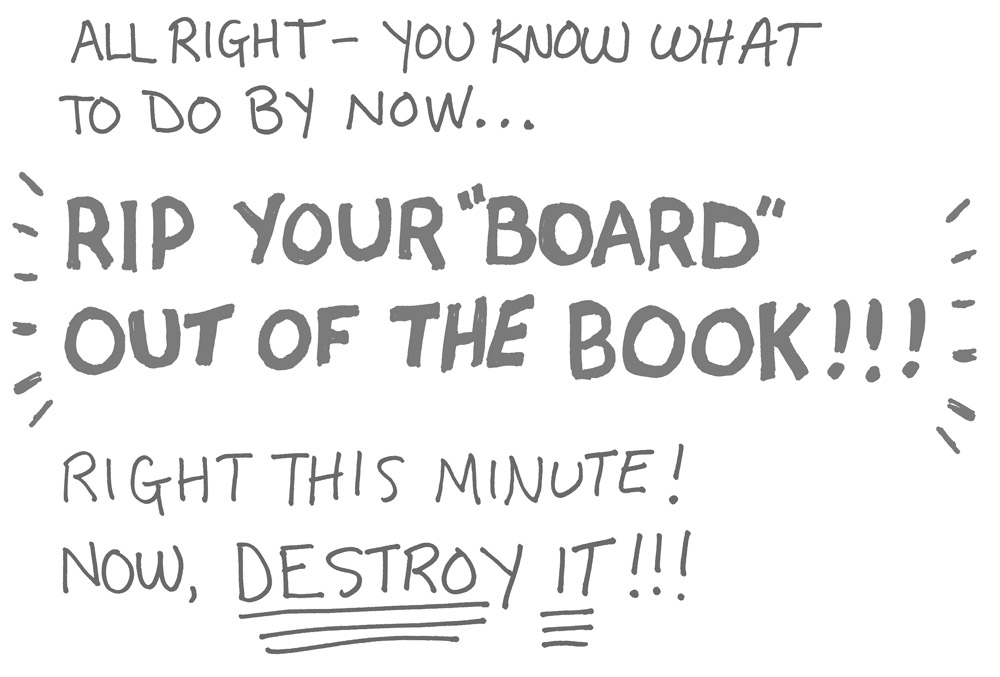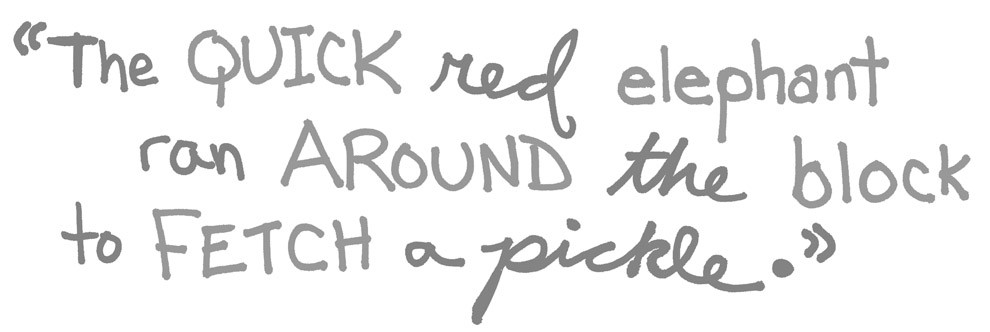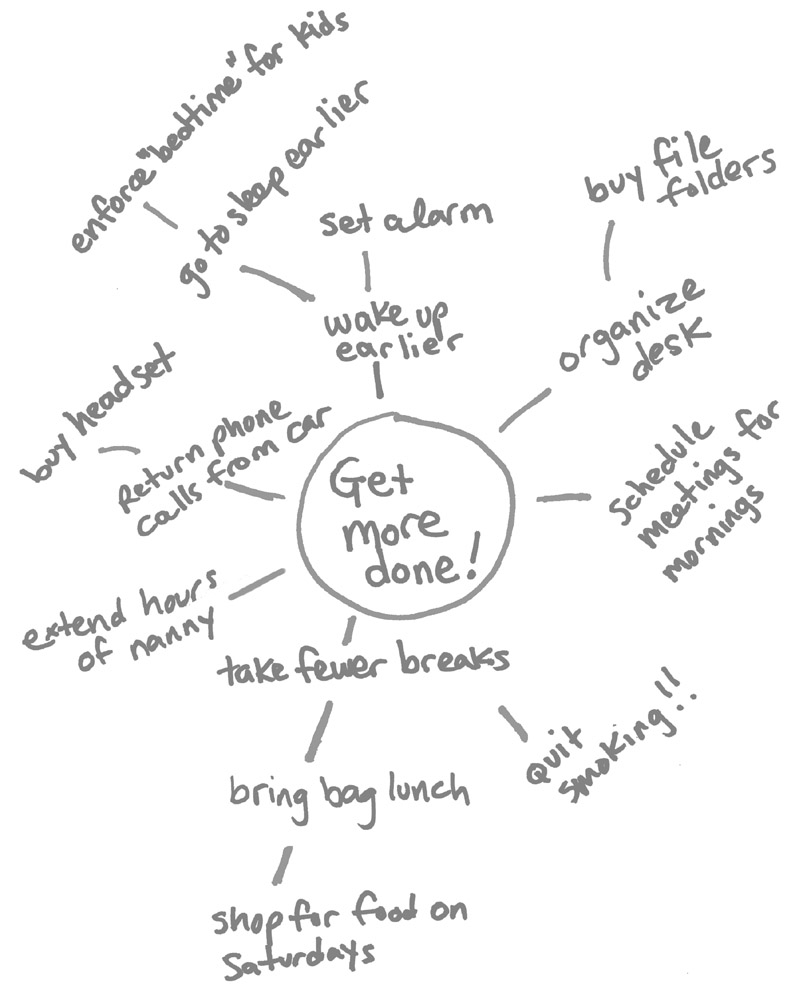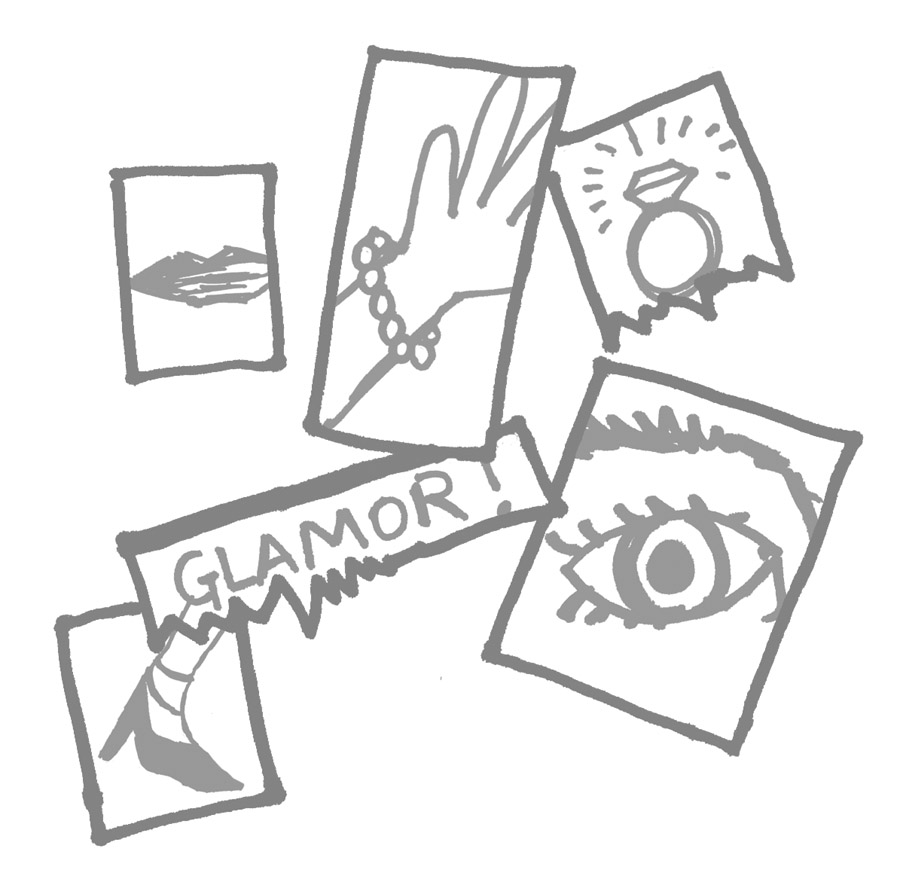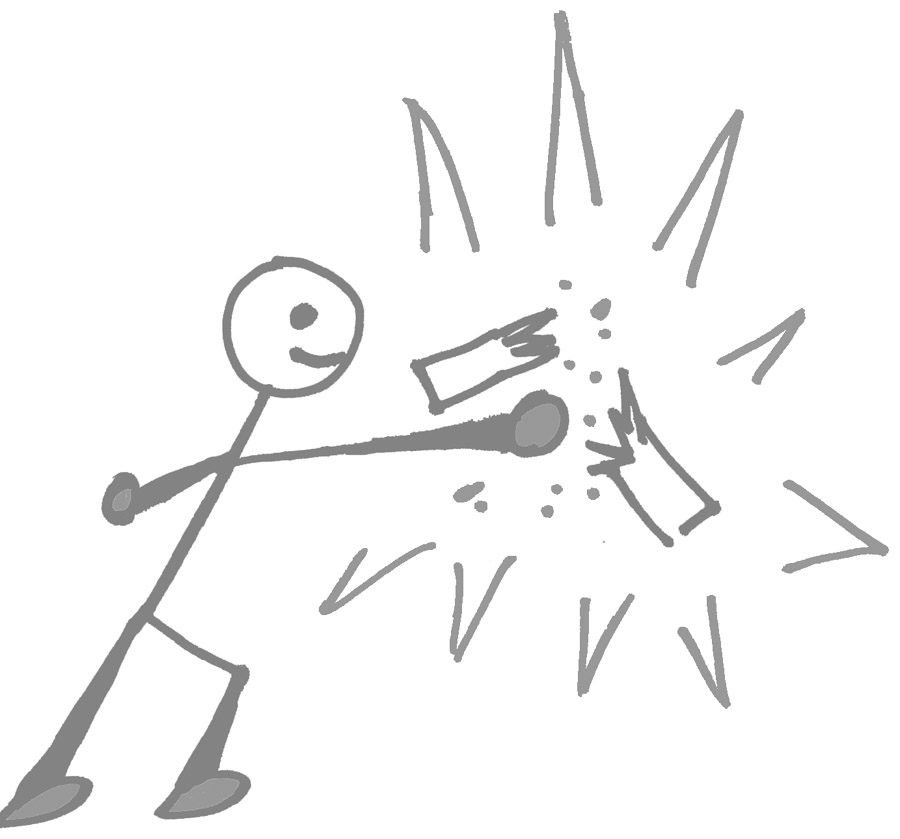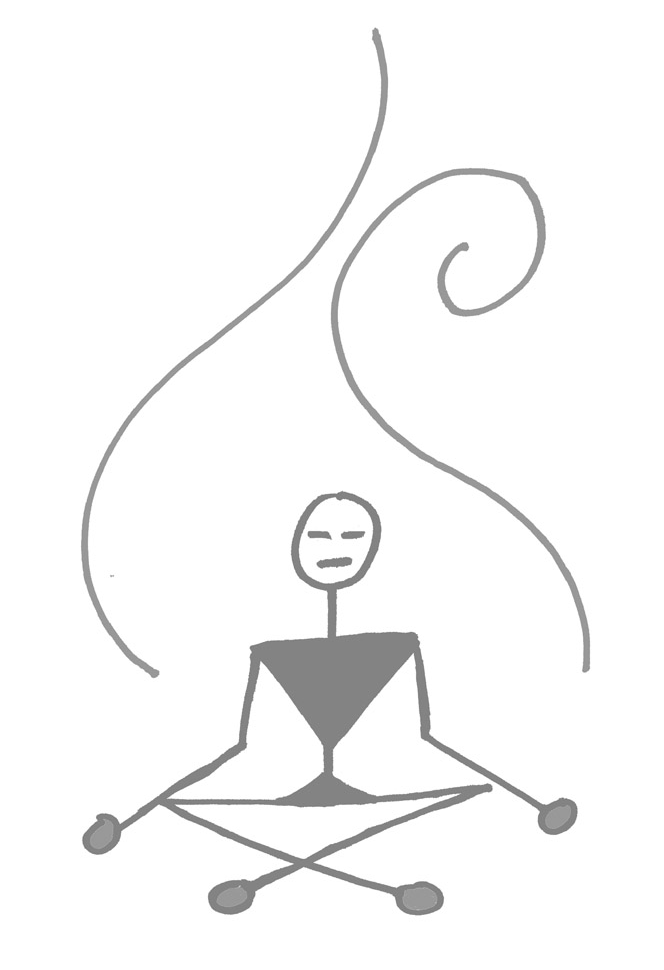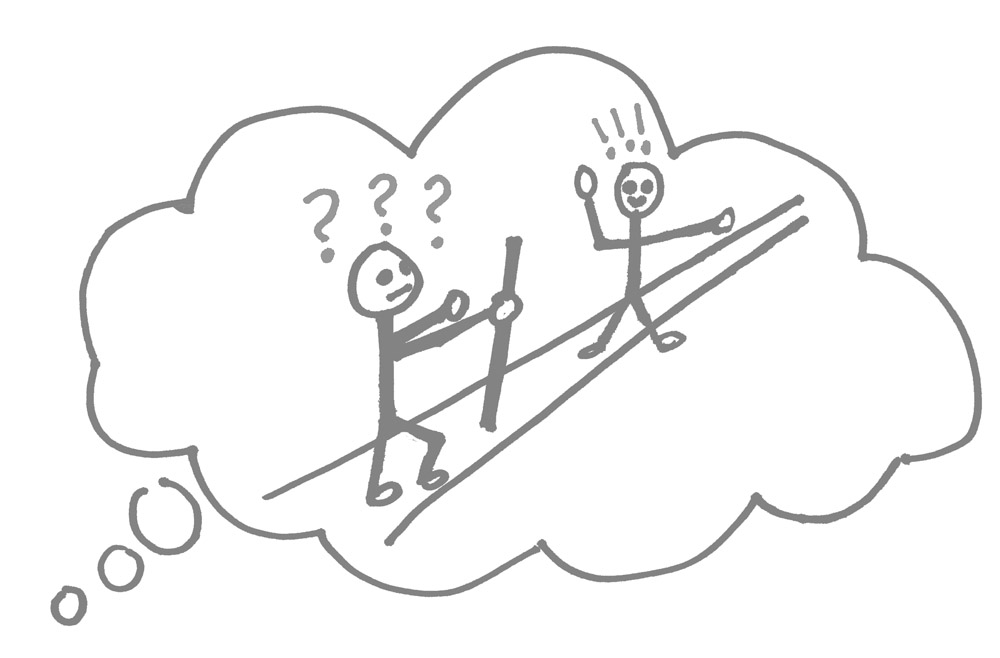Westside Toastmasters is located in Los Angeles and Santa Monica, California
Chapter 6: Break The Board
Overview
Once you've collected the raw material for your empathy board, what's next? This chapter is about solving problems by making the shift from left- to right-brain thinking. We break loose from the chains of the literal and let our minds function on a new level. Here is where the high-voltage idea is born. The theme of this resource has been that creativity is a skill like any other. It can be taught. Are you ready to learn?
We've come quite a way on our journey. We've discussed how to overcome the enemies of ideas, how to ask questions, ways to tap into the potential energy in a situation, and the power of making the Copernican Shift in your point of view.
Now it's time to have some new ideas.
After all the assessments have been made, the situation analyzed, and the conflicts understood, it's time to go into a brainstorming session and see what innovations you can create.
I have some exercises that I use over and over again in ideation sessions. I never know going in just what exactly is going to emerge, but something always does. These exercises are extensions of those that I've presented in earlier chapters, but this time, you have to focus on your own product or situation.
A reminder to those who remain convinced that they're better at analyzing and number crunching than at thinking up new things: This process is a skill that can be developed like any other. To use a classic metaphor, when you first climb onto a bicycle, you have to consciously shift your weight and learn to refine your sense of balance. Soon, it's second nature - then you can move on to scooters, unicycles, Rollerblades, and leaping the Grand Canyon on a motorbike.
And for those of you who come up with piles of new ideas every day, these exercises can help refresh you when you start thinking, 'The well is dry - I don't have a fresh idea left in me anywhere.'
Rather than just offering a list of exercises, I also want to discuss why and how these techniques can help to change the way you think and conceptualize. This is similar to the 'Asking Questions' chapter: It's as important to think about how to be as it is to think about what to do. Understanding the underlying theory can help you approach any problem in a more creative way.
Personality And Spirit
The theory that I use is based on a model of personality that I learned in executive coaching training. Our personalities have three basic components: our language, our emotions, and our bodies. They intersect with one another like this:
If someone has a personality characteristic, it shows up in each domain. This is a coherency - a way in which a particular trait manifests itself in physicality, language, and emotion.
For instance, if a person is outgoing and friendly in personality, you would expect her to have a relaxed stance, a friendly way of speaking ('Hey! How's it going? How can I be helpful to you? What are you doing this weekend?'), and an upbeat emotional state. If, however, the person has the proverbial 'chip on his shoulder,' you'd expect his chin to jut out, his conversational tone to be challenging, and his emotional state to be angry and turbulent. Think of someone who is arrogant, someone who is kind, someone who is diligent. You would expect these traits to be reflected in each domain.
In order to grow, a person must expand the boundaries of his or her personality. The only way to do that is to break an existing coherency. If someone is shy, she can begin to change her entire personality by adopting a strong physical stance. If someone has a chip on his shoulder, he can modify his personality by tapping into his feelings of gratitude and empathy.
We tend to be creatures of language, thinking primarily in words, and we can use our verbal facility to defend our inner selves. The concepts of 'lip service' and 'talking the talk' point up the fact that it's easy for us to change our words without changing our behavior. However, if we modify our body language or our emotional state, true growth is more likely to happen.
I believe that the same three-domain model holds true for creativity: Creative thinking can be stimulated through techniques that are language-based, emotion-based, or movement-based.
Experiencing The Rush
In many of my creativity training sessions, I invite my sensei (karate teacher) in to meet the class. He is able to teach everyone how to break a board with a well-placed karate chop and a very loud, from-the-gut yell. I have the members of the group write on their boards-they write down obstacles in their path, anything that is obstructing their progress or blocking their way. Then - CRACK - each of them breaks the board in two.
Reading about this, it might seem obvious ('Oh, yes, I get it; we're breaking through the barriers'), but the physical rush that each participant feels is undeniable. Again, this is why reading the exercises in this resource is not a substitute for actually doing them; one provides an intellectual understanding, while the other provides a visceral understanding. Board breakers say that it requires belief, energy, and focus to break the board with their bare hands after only two or three minutes of training. It is not physical force. It is, in truth, the combination of faith, energy, and focus. That's it. Imagine what would happen if you applied that same intensity to the opportunities that are at hand for you.
After we've had our karate session, I ask everyone to go through the three-panel cartoon exercise, describing her thoughts before, during, and after the moment when she broke the board. It's interesting to see how the experience changes each person, even when that person thought she knew what to expect.
I recommend that, when you try some of the exercises in this chapter, you evaluate them by doing that same three- panel cartoon exercise: What did you think before, during, and after?
Now you are ready to move on to specific exercises, to indulge in a 'wild and crazy time.' These exercises can open the floodgates and stimulate the flow of new ideas and concepts.
But...
You have to do the exercises. You can't just read them and nod your head knowingly. You have to jump in with both feet and really give each exercise your best shot. Ideas will come, but only if you direct all your energy toward creating the right conditions.
You can't build muscle by just reading about exercising. You have to get your butt into the gym and really sweat. Think of these exercises as weight lifting for your creative muscles. We all have these muscles - but a lot of us have allowed them to get slack and loose.
Each of these exercises assumes that you have a problem, project, or assignment for which you need to generate new ideas. These exercises are goal-oriented in the sense that they can help you free your mind and gain a new perspective, even though, at first glance, the exercise may not deal directly with the issue at hand. With each of these exercises, think about the process, not the result.
Remember: Go through each of the steps. Don't leap ahead. Don't push to find 'the right answer.'
These exercises ask you to change your patterns of behavior - to allow yourself to relax, to play, to loosen up, to be silly. Changing your established way of thinking is the only way to allow those flashes of inspiration to come - we're flying kites in a storm and hoping to attract lightning.
As you're working with markers, scissors, glue, and crayons, you may wonder, 'Why am I doing this?' I'll explain as we go along, but trust me, there's a method to this madness. If you commit fully, you will get results.
Pay attention to where the energy lies in the work you create. That is where the nugget of the idea that will solve your problem lies. Look for the energy, and even if the full idea isn't obvious to you, keep wondering about it, dreaming about it, writing about it, working it. An idea with energy can be fully developed . . . it's the programs without that spark of energy that are DOA.
Above all, I demand your passion.
On the following page, create a list of everything that you feel is holding you back from your creative self. This can include the enemies of innovation from the second chapter, something about the way your brain works, and any physical, environmental, or preferential constraints. Take all the time you need, and don't continue on to the rest of the chapter until you've finished this exercise.
Once you have written down everything that you feel is holding you back, study the list carefully. How many of these items are manufactured excuses? How many can you eliminate by thinking in a different way?
Exercise
Ten Random Things
On the next page, make a list of 10 random items - it could be 10 things that you see while you're sitting at your desk.
Now write as many associations as you can think of between those things and the issue at hand.
'What does a stapler have to do with my problem?' What are the qualities of a stapler? It binds things together, it opens up, it's something that you can use gently or you can bang your fist on, it's something that can hide in your drawer, it's an object of envy (how often do staplers get 'borrowed' permanently?), it's something that hasn't changed much over the last 50 years . . . and so on and so on.
As you go through this exercise with each of the 10 objects, you may stumble upon the 'aha!' moment: You see your problem in a new way.
Exercise
Word By Word
This is a perfect exercise for getting a small group or a team thinking together.
One person writes the beginning of a sentence and passes it to the next person. He or she adds a few words, then the next person adds a few more, and so on. (The sentence doesn't need to specifically address the problem you're working on. In fact, using a sentence that begins 'Our brand personality is . . . ' would defeat the spirit of the exercise.)
During the exercise, no spoken communication is allowed-let the ideas pop out in your writing. Don't restrain yourself, and don't try to push the writing in any particular direction. You'll be surprised at how quickly the group starts to think on the same wavelength.
Depending on the size of your group, you might let the page go around the circle three or four times; surprisingly enough, the writing will often come to its own natural conclusion.
Exercise
Now It's Personal
See if you can 'humanize' the situation you face in an interesting way. Give the creative problem at hand a personality and see what happens.
Is a competitor's brand like an unnoticed kid who wants tons of attention? How would you deal with that behavior in real life? What works when you're dealing with your two-year-old niece? How could you apply that knowledge to your business situation?
If you want your product or concept to really strike a chord or make a connection with someone, then it has to have an emotional, visceral quality to it. Our left brains aren't going to help us here.
We want to find a way to get around the filters that our logical left brains have put in place and tap into the creative energy of the right side of the brain. We can do this by using visual images rather than words to process information - both information coming in and information going out.
Information in: Pictures evoke emotional responses in us in a way that words can't. We respond to images viscerally, not logically. Think of photojournalism: All the words in the world can't capture the joy of a soldier kissing a girl in Times Square or the terror of a naked girl running from a napalm attack.
Information out: We're used to communicating with words, but when we speak or write, our logical left brains are in charge. We fall into established patterns. When we have to draw, most of us aren't as skilled - we don't have as many barriers getting in the way.
An important element in stimulating creativity through emotional, visual means is preparing the right environment. In other words, you need a place to play.
Get out some colored paper, markers, crayons, toys - anything that's silly, crazy, fun, and anti-'business as usual.' Put on some Mozart or Bach. Change the lighting. Sit on the floor.
If you change what you're doing and how you're doing it, your thinking will change as well.
Exercise
Mind Map
Begin with a circle. Write your idea (problem, issue, goal) in the circle.
Now write every related thought or idea around the circle, like moons orbiting a planet.
Don't edit yourself. Jot down your ideas as fast as they come, in any order.
By laying out your ideas like this, you can often see common elements or links between concepts that you wouldn't see if you had written down your ideas in a linear, list-like way.
The mind map is a good place to begin. Your ideas are all in front of you. As with any map, you first need to know where you are.
Exercise
Collage
Get a stack of magazines, scissors, glue, and paper. Make a collage that evokes the essence of what you're working on.
When you've cut out the pictures, spend some time playing with them - moving them around and putting them together in different ways.
After you make the collage, put it away for a day or two, then look at it again. Sometimes you'll be surprised at what you see - something that you didn't notice when you were making it.
Show the collage to other people who don't know what inspired it. Ask them to describe their first impression - what's the first thing they think of when they see it?
You're facing a deadline; you've been working all day and all night. You've thought and thought and thought. Your brain is on overload; your mind is swimming with details and possibilities; and you swear you can actually feel your circuits melting down.
When your brain is frying and you've hit the wall, you need to take the pressure off your mind and let your body take over.
Rhythmic, repetitive motion of your body distracts your left brain and frees your right brain to percolate and generate new ideas. Beethoven used to do his best composing while he was walking. It's thinking while not thinking.
If you've ever had a massage, you have experienced how your mind seems to empty out; you aren't controlling it, but instead you are letting the thoughts flow by uninterrupted. It's a step toward uncorking the blockage and getting back to a freer creative flow.
Exercise
Get Out
One of the best ways to get your creativity flowing is to get your endorphins flowing. Run, swim, bike, walk - in short, get outside and sweat.
Exercise
Conveyor Belt
Another method of idea generation is to produce a lot of ideas. Think of a conveyor belt or a luggage carousel, endlessly moving and bringing forth one object after another. The idea that's coming down the conveyor belt right now may not be the one you need, but the next one might be.
Pushing yourself to keep the ideas coming is a way to keep the creativity channel moving and to reduce the pressure of thinking that every idea has to be 'the one.'
Writing teacher Natalie Goldberg tells her students to keep the hand moving across the page, even if you're just writing 'I can't think of anything new to say.' Ideas lead to more ideas, which lead to even more ideas. You have to get the 'bad' ideas out of the way, so that the 'good' ones can emerge.
Thomas Edison, when he wasn't pondering how pinecones grow upside down, produced one minor invention every ten days and a major invention every six months. He still holds the record for number of patents: 1,093.
Exercise
Yes, Break The Board-A Real One!
Breaking boards with the guidance of a sensei, as I described at the beginning of the chapter, is a way to free your creativity through physical action. (Let me add a disclaimer here: I'm not suggesting that you go whacking away at wooden planks with your bare hands without qualified instruction. Use your common sense, folks.)
Other activities that I've had groups engage in include building fanciful prototypes of a magical music machine out of Styrofoam and Play-Doh, assembling a complete Mr. Potato Head when each participant was handed a random box of parts, and constructing towers out of Legos.
In each case, all the participants knew what they were supposed to 'learn' ('Ahh, we're cooperating and working as a team!'), yet the act of physically building something by hand affected the group in a much deeper way than simply talking about the issue.
Use your hands. Build something. Make something. Break something.
The last domain, where body, emotion, and language intersect, is the spiritual.
Gut feelings, instinct, a natural radar - we have all had times when we paid attention to the part of ourselves that wasn't operating on a conscious, intellectual level. It was deeper, more grounded, more certain. It's difficult to always be plugged in to this part of ourselves - our essential selves - but when the connection is there, it's strong and sure.
I believe that meditation and dreaming are the keys to unlocking what our essential self knows in a way that we cannot do through our normal, waking intellect.
If you think back to the enemies of innovation, the common element of all of them was some form of fear. When we strengthen ourselves, becoming more connected and in tune with who we really are and what our goals are, we are less likely to fall prey to paralyzing fear. We think more clearly; we are more open and perceptive. We can really see.
Exercise
Keep Breathing
Meditation is a fantastic way of suppressing the left brain and focusing our creativity.
I'd like you to experiment with sitting and paying attention to your breath for two minutes upon waking and before sleeping every day for a week.
Sit with your feet flat on the floor, either cross-legged on the floor or on an armless chair. Sit straight, with your ears over your shoulders over your hips. Feel the area about two inches below your navel. Inhale into this place. When you inhale, your belly should expand. When you exhale, your belly should contract.
(Keep your belly soft and pliable. This is not the time to 'hold it in.' No one's looking.)
Count 'one' as you breathe in; count 'two' as you breathe out. Then count 'three' as you breathe in and 'four' as you breathe out. Keep going up to ten, then start over at one. If your mind wanders and you find yourself thinking about something else, gently start over at one. If you realize suddenly that you're on thirty-six, gently start over at one.
When a thought comes, thank it for showing up, then let it go. Thoughts should appear and disappear like clouds on a blue sky. Always bring your attention back to rest lightly on your breath.
Record in your journal what you experience. It may be nothing at first. You may be resistant in the beginning. Just keep at it, learn heuristically, and see what unfolds in front of you.
Exercise
Beyond Meditation
There are many ways to engage your spiritual self beyond simple meditation and dreams. You have to follow your instinct in choosing a path that is right for you.
You might try a guided meditation: Meet your older, wiser self on a trail, and ask for guidance in your current situation.
Or ask your Higher Power for help. Prayer is another form of meditation.
Or go to a spiritual service of some kind.
Or help someone else for an hour or two. Tutor a kid. Feed the homeless. Get outside of yourself and your concerns. Making a Copernican Shift in your own life can be a step toward releasing the flow of creative energy.




